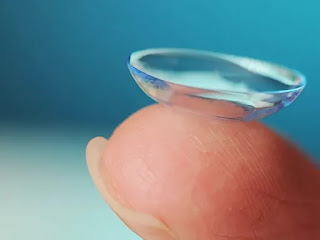Can an eye drop really replace my reading glasses?
Wondering if eye drops can replace readers???
Maybe you saw a segment on TV, or your friend mentioned a new eye drop they’re using to read the menu at dinner. You might be wondering… does it work? Back in October, the FDA approved the use of an eye drop called Vuity. Let me fill you in!
What is it?
Vuity (pilocarpine 1.25%) is a formulation of a drug called pilocarpine, an old glaucoma medication. It is almost never used now to manage glaucoma because of its side effects and the development of more modern treatment options. Compared to commercially-available pilocarpine, Vuity uses a proprietary “vehicle” to cause less stinging with instillation.
Who is it for?
It was approved for patients aged 40 to 55 with presbyopia. Presbyopia is the natural aging of the lens in your eye that affects your ability to focus on near objects like books, cell phones, menus, etc. This eventually happens to everyone and is not a disease. Ideally, this patient should be able to see far away with minimal help and be relying on reading glasses only for near tasks.
How does it work?
It stimulates the muscles in the eye to 1) contract, which flexes the lens inside the eye to increase focusing power, and 2) to constrict the pupil, which provides a greater depth of focus. These actions work together to improve near vision, and participants in the clinical studies experienced an improvement of at least 3 lines. It has less effect on older patients, and is not needed before the age of 40 because your eyes still have the ability to flex naturally.
How long does it last?
It has been shown to be effective for 6 hours and start working in as little as 15 minutes. It is intended to be used as a once-daily eye drop.
Any side effects or adverse reactions?
Certainly! Headache and eye redness are most common. Due to its effect on the pupil, reduced peripheral vision, dimming of vision, and difficulty driving at night are also possible side effects. Temporary distance blur and difficulty adjusting between near and distant objects may occur. Most importantly, albeit rare, is the risk of retinal detachment - when the ciliary muscle contracts it can shift everything forward in the eye and result in traction or pulling on the retina.
How much does it cost?
Around $80 per bottle. It is prescription-only and not covered by insurance. One bottle will last nearly a month, so, if you are using 1 drop in both eyes daily that is just over $1,100 per year.
My two cents
Vuity is not a fix or cure-all, but an adjunctive treatment option for presbyopia… another tool in the toolbox. I see it as an occasional option for patients to use for those times they want to be less dependent on their readers or bifocals. The biggest drawback is the lack of all-day efficacy, not to mention the potential side effects and cost. It may lessen the annoyance of having to reach for your “cheaters”, but it is not a valid long-term solution and prolonged near work will likely require correction. Full disclosure: I am still a few years away from presbyopia so it’s easy for me to say stick with the zero-risk OTC readers or a nice progressive bifocal. Like anything else, some people will love it and some will hate it. Just be sure to always consult your eye doctor!
- Dr. Rachel

Amazing blog! This is a really informative post about Vuity! It’s great to know about new options for presbyopia, but as always, it’s important to consult with an optical vision centre to make sure it’s the right choice for you.
ReplyDelete